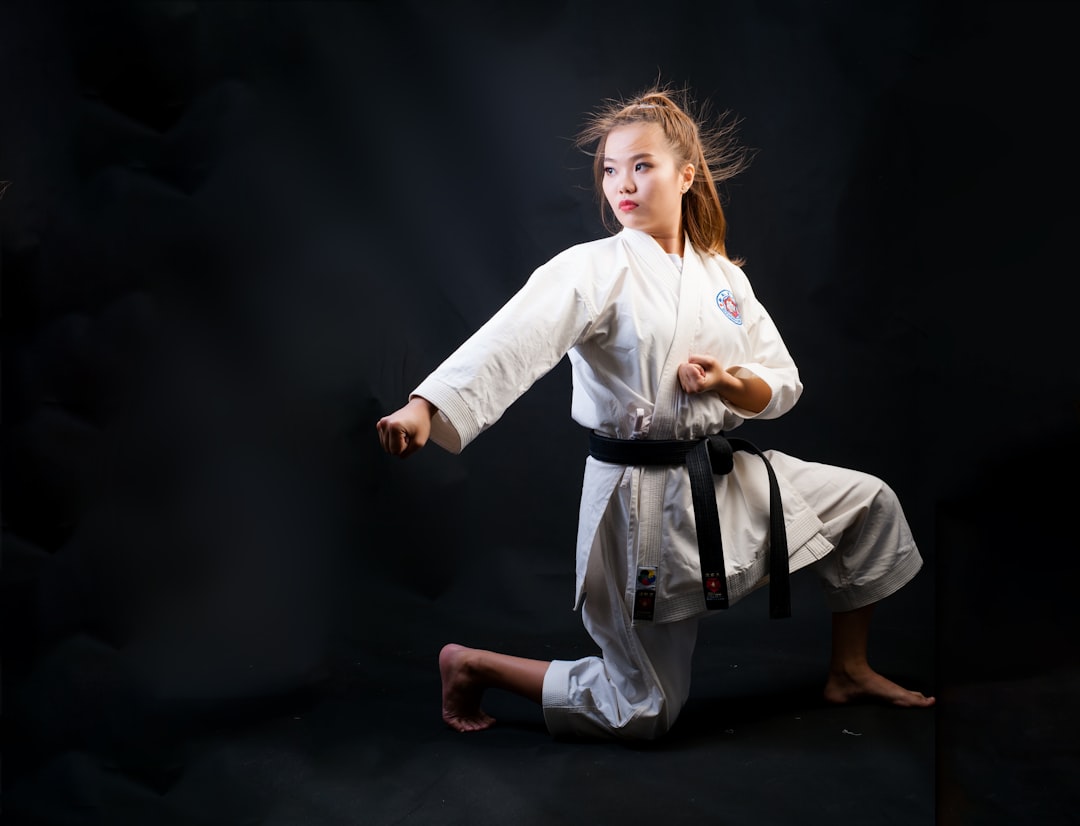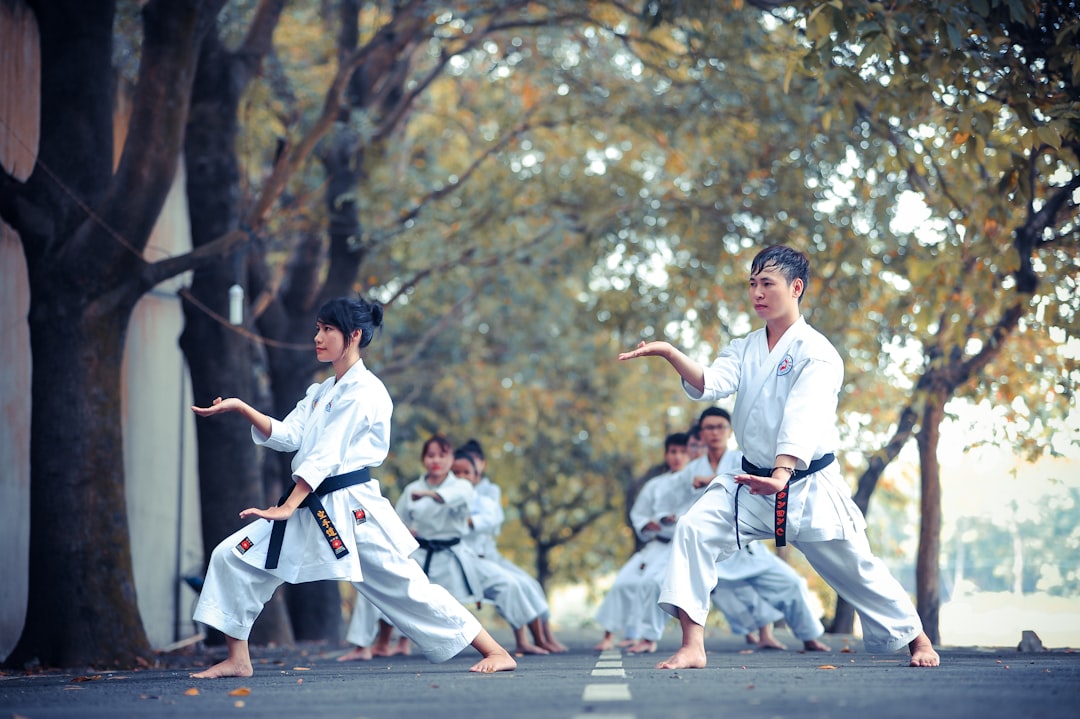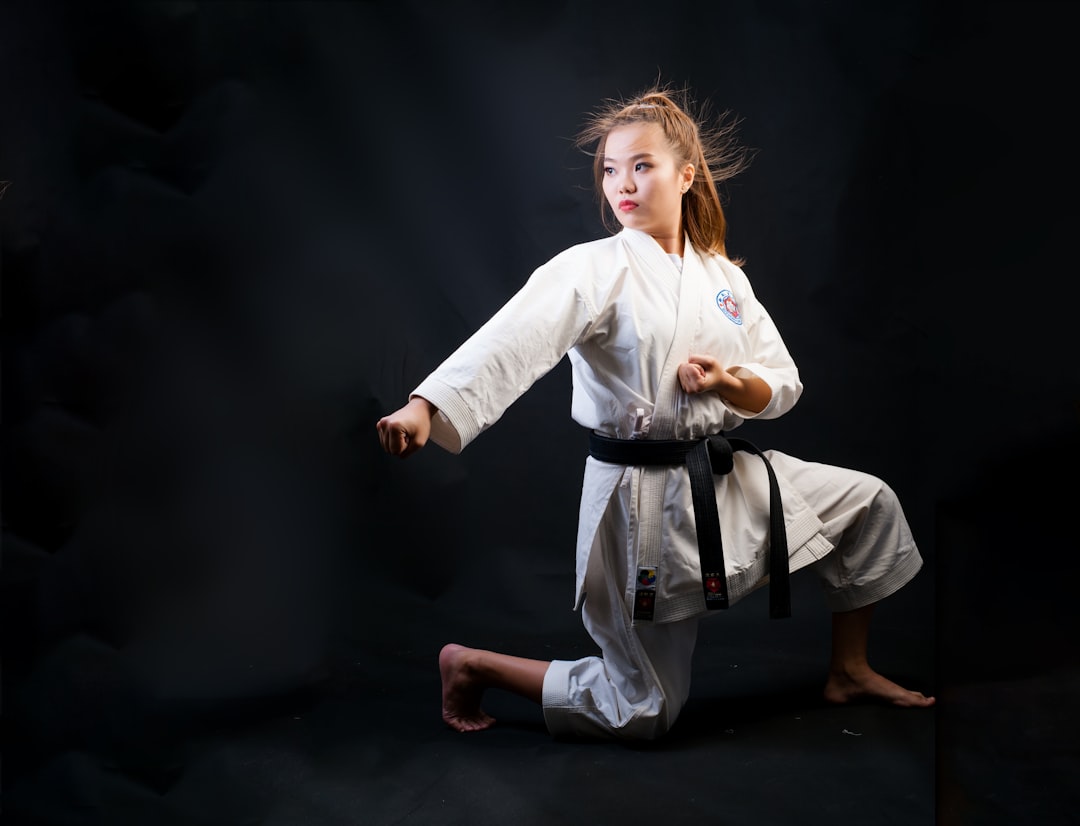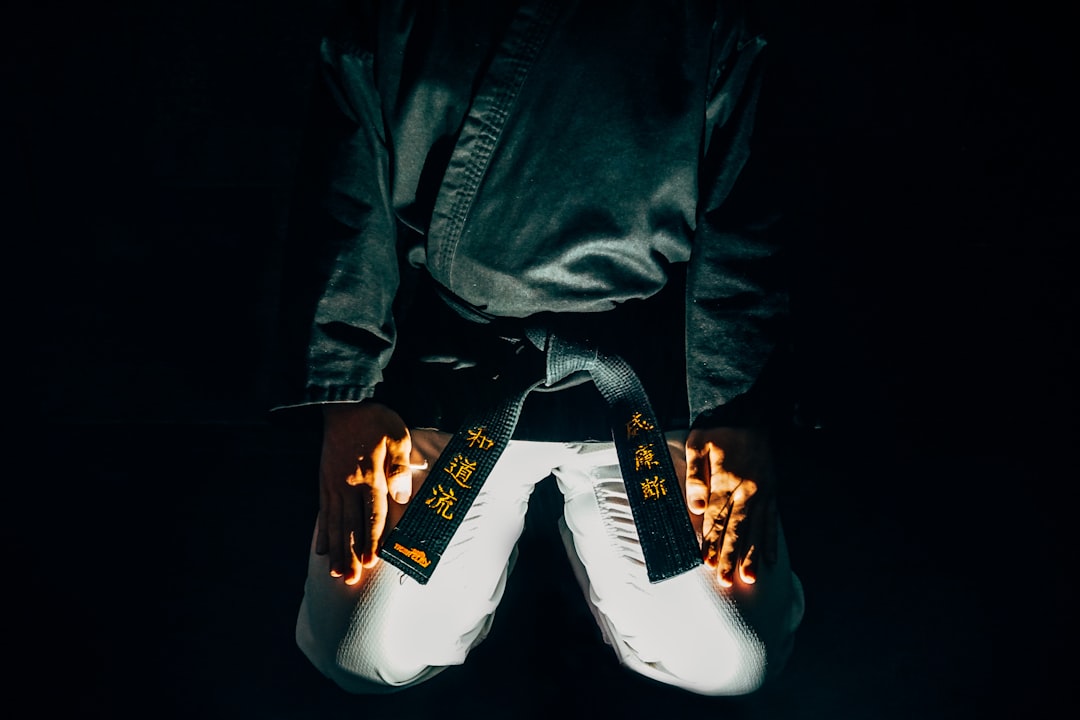The karate suit, known as a gi, is an essential element in karate practice, serving beyond its functional role as a uniform. It symbolizes tradition, discipline, and the practitioner's commitment to the art. A traditional gi consists of a white cotton jacket, trousers, and belt, designed to enhance movement and provide feedback on technique. The choice of cotton offers breathability and resilience for demanding training sessions. Its design not only is practical but also reflects karate's Japanese origins. Throughout its history, the gi has evolved from simple attire in Okinawa to a globally recognized symbol of karate. Modern gis incorporate durable blends and adjustments to accommodate various practitioners while retaining traditional elements. Selecting a gi involves considering comfort, performance, and durability, with proper care—gentle washing, air drying, and regular checks for wear—essential to maintain its integrity and support the practice's technical demands. Maintaining your karate suit ensures it remains functional and respectful to the discipline, whether you are a beginner or an experienced practitioner.
Exploring the traditional and functional aspects of martial arts, this article sheds light on the quintessential karate outfit, known as the Gi. Delve into its historical roots and understand why it’s more than mere attire. From its origins to contemporary use, the Gi has evolved, reflecting both cultural significance and practical design elements. Learn about the components that make up a Gi, how to select one suited for your practice, and maintenance tips to maintain its integrity. Whether you’re a beginner or an advanced practitioner, understanding the role of a Gi is crucial in your martial arts journey.
- Understanding the Essentials: The Significance of a Karate Suit Called Gi
- Historical Evolution of the Karate Suit: From Its Origins to Modern Practice
- Anatomy of a Karate Suit: Components and Functionality of the Gi
- Selecting Your Gi: Factors to Consider for Practitioners of All Levels
- Caring for Your Karate Suit: Maintenance Tips to Keep Your Gi in Top Condition
Understanding the Essentials: The Significance of a Karate Suit Called Gi

Understanding the essentials of a karate suit, known colloquially as a gi, is pivotal for practitioners and enthusiasts alike. The gi serves as more than just a uniform; it’s an integral part of the discipline and tradition that underpins karate. What precisely defines a karate gi? Typically, it’s a white cotton garment consisting of a jacket, trousers, and belt, each element purposefully designed to facilitate movement and provide feedback on technique. Does the fabric have any special significance? Indeed, the traditional cotton material allows for breathability and durability during practice, which is crucial for comfort and safety. The gi’s design also reflects the martial art’s origins, with its simple and practical style rooted in Japanese culture. How does the karate suit contribute to the learning experience? It not only signifies the learner’s commitment but also helps instructors assess students’ stances and movements accurately. As a result, the gi is not merely a garment but a symbol of respect for the discipline and an essential tool in the practice of karate.
Historical Evolution of the Karate Suit: From Its Origins to Modern Practice

The term “karate suit” commonly refers to the white uniform worn by practitioners, often called a gi. However, the evolution of this garment reflects a rich history that intertwines tradition with practicality. Initially, Okinawan karateka trained in clothing commonly used for daily wear, which were simple cotton trousers and jackets. As martial arts began to spread beyond its island origins, the need for a uniform that was both functional and identifiable emerged. The modern karate suit is a standardized version of these early attire, with specific cuts and designs that allow for ease of movement and facilitate learning and teaching of the art. Today, the gi remains an integral part of the practice, embodying the discipline and respect inherent to the martial art. It has undergone minor modifications over time to improve functionality in various karate styles, yet it retains the traditional aesthetic that harks back to its origins. What started as everyday attire has thus become a symbol of the dedication and skill of karate practitioners around the world. How have the designs and materials of the karate suit evolved to meet the needs of modern practice? The modern karate suit, or gi, is a refined version of the traditional garb, incorporating features that enhance mobility while maintaining a connection to its historical roots. The gi’s fabric has transitioned from cotton to a blend that can withstand more rigorous training without compromising on comfort or durability. Additionally, the sizing and cut have been adjusted over time to fit a diverse range of practitioners, ensuring that the suit supports the body in motion without restricting movements essential to karate techniques. These changes reflect an ongoing commitment to honoring karate’s heritage while accommodating contemporary practice.
Anatomy of a Karate Suit: Components and Functionality of the Gi

A karate suit, commonly referred to as a gi, is a traditional garment worn by practitioners during training and competitions. The anatomy of a karate gi is structured to facilitate both the comfort and functionality necessary for the practice’s dynamic movements. Comprising a jacket, trousers, belt, and sometimes a shirt, each component serves a specific purpose. Is the design of a karate suit called a gi purpose-built? Indeed, the top part of the gi, known as the jacket or uwagi, is tailored to allow for a full range of motion without restricting the practitioner’s movements. It typically features a loose fit with long sleeves, and is often made of cotton or hemp for durability and comfort. The trousers, or pants called nagajuban, are wide-legged and extend past the ankles, providing ease of movement and covering the full length of the legs. They are usually held up by a leather or synthetic belt, known as an obi, which also serves to secure the waistband of the trousers. The belt, or obi, is not only functional but also symbolic, as different colors denote various ranks within karate practice. Lastly, some practitioners choose to wear a short-sleeved shirt beneath the jacket for added protection and comfort during training. This layer can be removed or adjusted according to the intensity of the workout or the preferences of the individual. What role does the gi play in karate? The gi is essential for identifying rank through belt color, providing a uniformity that reflects the discipline and equality among practitioners. It also allows instructors to assess form and technique by eliminating distractions from varying attire. In summary, the karate suit called a gi is not merely an outfit but a pivotal element of the karate tradition, designed with intention to enhance both the martial art’s performance and its cultural significance.
Selecting Your Gi: Factors to Consider for Practitioners of All Levels

When selecting a karate suit, known as a gi, for practice or competition, there are several key factors to consider, regardless of your experience level. Firstly, the material of the gi is an important aspect; it should be durable and comfortable enough for repeated movements and rigorous training. Does the fabric offer the right balance between breathability and durability? A high-quality cotton or a blend that wicks away moisture can provide both comfort and longevity. Secondly, the fit of the gi is crucial. It should not be too tight as to restrict movement, nor too loose as to hinder your technique. Are the sleeves and pant legs hemmed appropriately for your height and build? The right fit will ensure that you have a full range of motion, which is essential in executing karate techniques effectively. Additionally, consider the weight of the gi; traditional gis are heavier and provide more structure, while lighter ones offer greater flexibility. Which weight suits your training environment and personal preference better? These factors combined will help you choose a gi that not only meets the traditional standards of karate attire but also supports your practice as a martial artist at any level.
Caring for Your Karate Suit: Maintenance Tips to Keep Your Gi in Top Condition

When it comes to maintaining your karate suit, commonly referred to as a gi, proper care is essential to ensure its durability and longevity. A well-maintained gi not only reflects the respect you have for the martial art but also provides optimal performance during training or competition. To keep your gi in top condition, start by reading the care label instructions provided by the manufacturer. Are the washing instructions clear? Most gis are made from cotton and can be machine washed, but it’s crucial to use a gentle cycle and a mild detergent to avoid damaging the fabric.
After washing, hang the gi to air dry flat, away from direct sunlight to prevent fading and shrinkage. Do you have a suitable drying area? Ensure the gi is completely dry before folding it and storing it. Proper storage prevents mold and mildew growth, which can occur in humid conditions. Additionally, regularly inspect your gi for any signs of wear or tear, especially at the knees and elbows, areas that experience frequent friction during practice. Replace your gi as needed to maintain its integrity and functionality. What condition is your current gi in? Regular inspections and timely replacements will ensure your karate suit remains a reliable partner in your martial arts journey.
In conclusion, the karate suit, or Gi, is far more than a mere uniform; it is a traditional garment steeped in history and integral to the practice of karate. From its origins to the modern-day dojo, the Gi has evolved yet retained its significance as a symbol of respect, discipline, and tradition. Understanding the essential components and functionality of a Gi ensures that practitioners of all levels can select one that meets their needs while honoring the art of karate. Proper maintenance of your Gi is crucial to its longevity, allowing you to honor this traditional martial art with an appropriate attire that has stood the test of time. Whether you are a beginner or an experienced practitioner, the karate suit called Gi remains an indispensable element in the practice and appreciation of karate.
